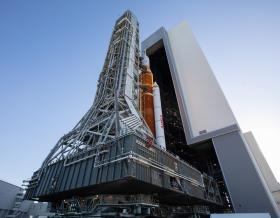Jacobs, along with NASA and industry counterparts, is committed to providing integrated solutions in support of the agency's deep space human exploration program, Artemis. Named after the twin sister of Apollo and goddess of the moon in Greek mythology, NASA’s Artemis missions aim to land the first woman and the first person of color on the moon and establish sustainable exploration in preparation for missions to Mars.
Artemis I, an uncrewed flight test of NASA’s Orion spacecraft capsule atop the Space Launch System (SLS) rocket, is the first in a series of increasingly complex missions that will enable human exploration to the moon and beyond.
Across multiple NASA Centers, contracts and programs, Jacobs is committed to providing innovative solutions and technologies in support of the agency’s Artemis program.
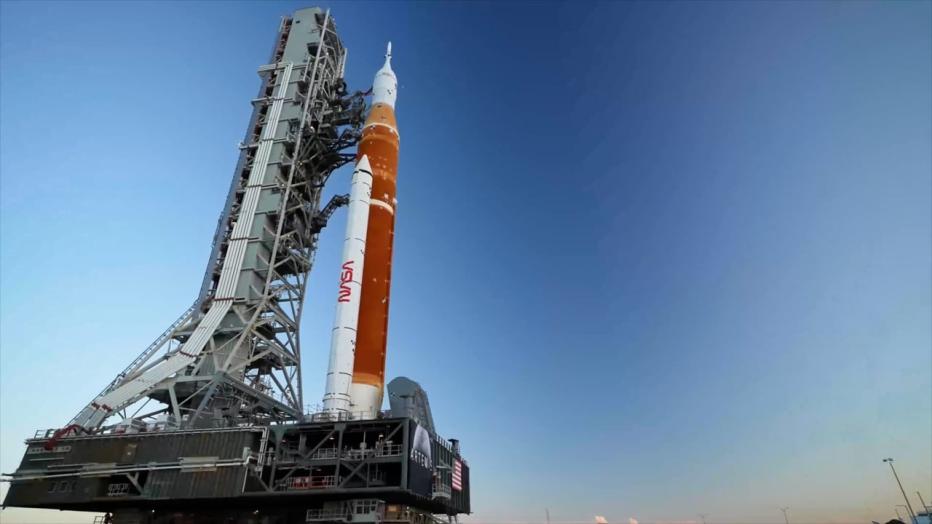
Exploration Ground Systems
As the Artemis prime contractor at Kennedy Space Center (KSC) for NASA's Exploration Ground Systems (EGS) Program, Jacobs is responsible for receiving all SLS and Orion flight hardware, assembling and integrating all the large elements, conducting final tests and checkouts, transporting the rocket and spacecraft to the pad, helping to launch it on the mission, and then supporting the recovery of Orion.
The Artemis I rocket recently underwent the final major milestone ahead of launch: The Wet Dress Rehearsal, or WDR. For this test, the rocket stack was transported on the massive crawler transporter to Launch Pad 39B at KSC, where the launch control team filled the fuel tanks with cryogenic (supercooled) liquid oxygen and liquid hydrogen, then conducted a launch countdown from T-10 minutes down to T-29 seconds. This marked the second trip to the launch pad for a WDR test, and this successful effort allowed the team to move forward and focus on final preparations for launch.
Following the WDR, the skyscraper-sized Artemis I stack atop the mobile launcher was rolled back to the iconic Vehicle Assembly Building (VAB), where it is undergoing final flight hardware closeouts before returning to the pad for launch.
Jacobs is also supporting the SLS and Orion spacecraft development through contracts at Marshall Space Flight Center, Johnson Space Center (JSC), Langley Research Center, Ames Research Center and the Glenn Research Center, as well as project support at Stennis Space Center and Michoud Assembly Facility.
Space Launch System Development
Jacobs is providing technical leadership and support to NASA’s Space Launch System Program in the areas of vehicle systems engineering and integration; flight software development; avionics systems integration; lab construction and operation; vehicle structural load development; structural, propulsion and acoustic testing; and design, development and analysis.
At Marshall Space Flight Center, Jacobs’ support includes construction and operation of the SLS flight software/hardware integration and test facility, the Systems Integration Lab (SIL).
The Jacobs team also designs and oversees development and test of the Ground Support Equipment required to transport, test, and operate the massive SLS flight hardware on the ground.
-

Artemis I rocket transported back to the VAB on July 2. Credit NASA
-

SLS, the world’s most powerful rocket. Credit NASA
-

Testing the Orion Capsule Parachute Assembly System. Credit NASA
Orion Crew Module Safety Systems and Life Support
Additionally, we're helping to ensure Orion is as safe as possible from launch to re-entry and through splashdown. Our team worked with NASA engineers to fully develop and test the Orion re-entry parachute system that will slow down the capsule to about 300 mph at 25,000 feet to less than 25 mph at water impact. We successfully performed numerous tests around technical condition scenarios and fully certified the system for approved use on NASA’s Orion spacecraft.
For NASA’s launch abort system project, we worked across five NASA centers to help develop and successfully test the reliability of the abort system for Orion.
Gateway
Gateway will serve as an orbital space station providing support for lunar surface missions, docking ports for a variety of spacecraft, space for crew to live and work, and capabilities for scientific missions. Jacobs is helping to design and test the Habitation and Logistics Module, or HALO, a critical component of NASA’s Gateway.
The HALO module will feature a pressurized crew habitat with full communications, navigation, thermal control and life support systems. Our team will help test and develop critical life-support systems that will safely protect and sustain astronaut crews for extended periods of time aboard Gateway.
-
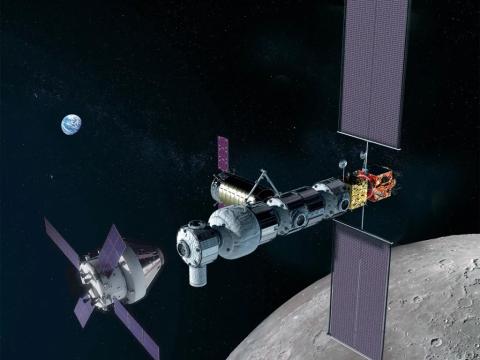
A rendering of NASA's proposed lunar gateway. Credit NASA
-

An artist's concept of the completed design of NASA’s VIPER. Credit NASA
-

Spacesuit technology development rendering. Credit NASA
VIPER Autonomous Lunar Rover
NASA’s Artemis robotic lunar rover, Volatiles Investigating Polar Exploration Rover, or VIPER, is designed to traverse the extreme environment of the South Pole of the moon in search of frozen water and other potential resources. Our robotic engineers at JSC directly support the NASA team in VIPER systems engineering, integration and testing as well as design of structural elements, motor controllers and lights.
Artemis Spacesuit Technology Development and Validation
Our team is collaborating with both NASA and commercial spacesuit providers to provide safe, durable, flexible and comfortable spacesuits for both intravehicular and extravehicular activity use on the moon.
With average temperatures on the moon ranging from –298 degrees F in shadow to 224 degrees F in the sun, such a wide temperature range poses a problem for moon-walking astronauts. To address this issue, Jacobs is working with NASA personnel to develop the Spacesuit Evaporation Rejection Flight Experiment (SERFE), designed to evaluate and demonstrate newly developed active thermal control technology to protect suited astronauts from extreme temperatures.
As NASA’s largest services contractor, Jacobs is a provider and integrator of full lifecycle aerospace capability including design and construction; base, mission and launch operations; sustaining capital maintenance; secure and intelligent asset management; and development, modification, and testing processes for fixed assets supporting national government, military, defense and NASA, as well as commercial space companies. Jacobs was recently awarded the JSC Engineering, Technology, and Science (JETS) II contract to continue providing engineering and scientific products and technical services for NASA at JSC.
You might be interested in...
-
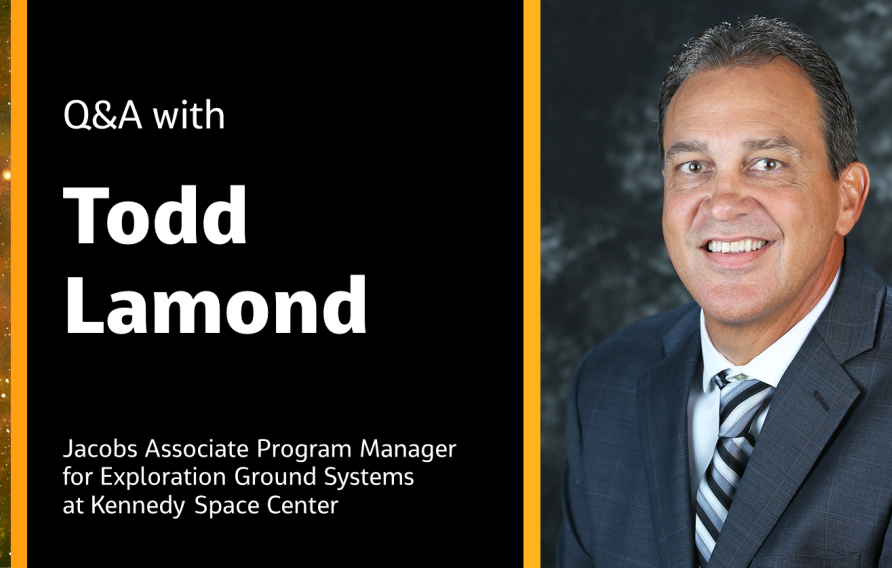 News
NewsReflections on Launching Artemis I: A Q&A with National Space Club Award Winner Todd Lamond
Jacobs’ Associate Program Manager for Exploration Ground Systems at NASA’s Kennedy Space Center is being recognized, along with the Artemis I mission team, with the prestigious 2024 Nelson P. Jackson Aerospace Award from the National Space Club. Celebrate Todd’s achievements with us in this new Q&A.
-
 News
NewsJacobs Supports Successful Completion of NASA's Artemis I Moon Mission
Jacobs congratulates NASA on the successful completion of the 25.5-day Artemis I mission to orbit the moon, following the safe splashdown of the Orion spacecraft in the Pacific Ocean.
-
 News
NewsNASA's Artemis I Moon Mission Takes Flight With Successful Launch From Kennedy Space Center
Jacobs congratulates NASA on the successful launch of the agency's Space Launch System (SLS) rocket and Orion spacecraft for the Artemis I mission, which lifted off Nov. 16 from historic Launch Pad 39B at Kennedy Space Center (KSC) in Florida.
-
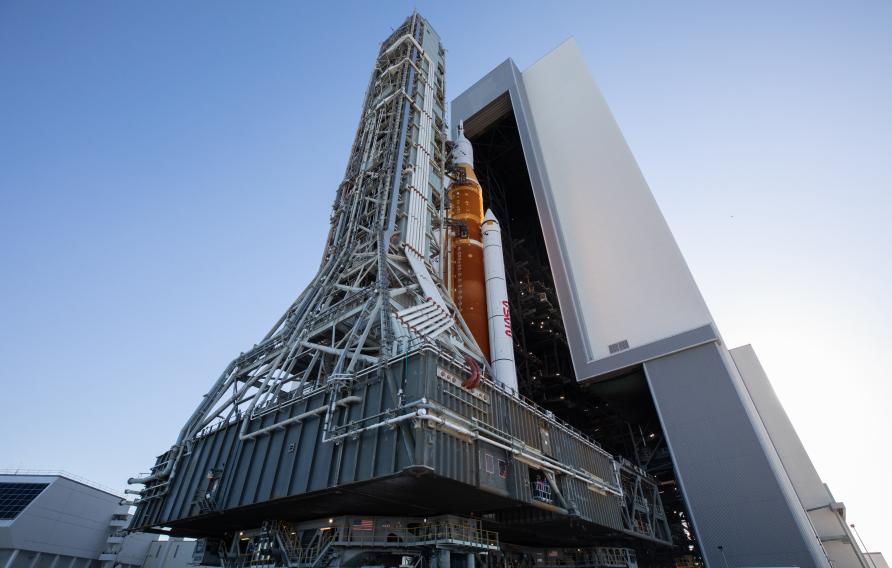 Showcase
ShowcaseArtemis - We Are Going
Artemis is NASA’s deep space human exploration program which aims to land the first woman and the first person of color on the moon and establish sustainable exploration in preparation for missions to Mars.
-
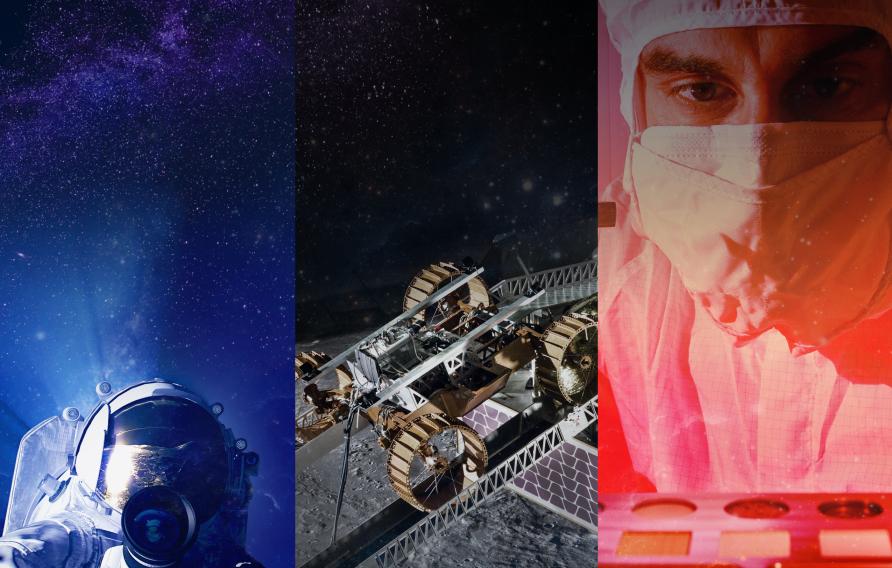 News
NewsJacobs Awarded $3.9B Engineering and Science Contract at NASA
Jacobs was awarded the JSC Engineering, Technology, and Science (JETS) II contract at NASA Johnson Space Center in Houston, Texas.
-
_-_credit_jacobs%2c_ben_bairbf40.jpg) News
NewsArtemis I Rolls to Launch Pad for the First Time
The Jacobs team supported NASA rolling out the Artemis I rocket from the Vehicle Assembly Building (VAB) to Launch Pad 39B at NASA's Kennedy Space Center (KSC) in preparation of final prelaunch tests of the Space Launch System (SLS). Artemis I, a flight test of the most powerful rocket NASA has ever built, will be the first mission in NASA's new deep space human exploration program, which aims to land the first woman and the first person of color on the moon and establish sustainable exploration in preparation for missions to Mars.












2c4e.jpg)


















_0ac2b.jpg)









2747.png)











